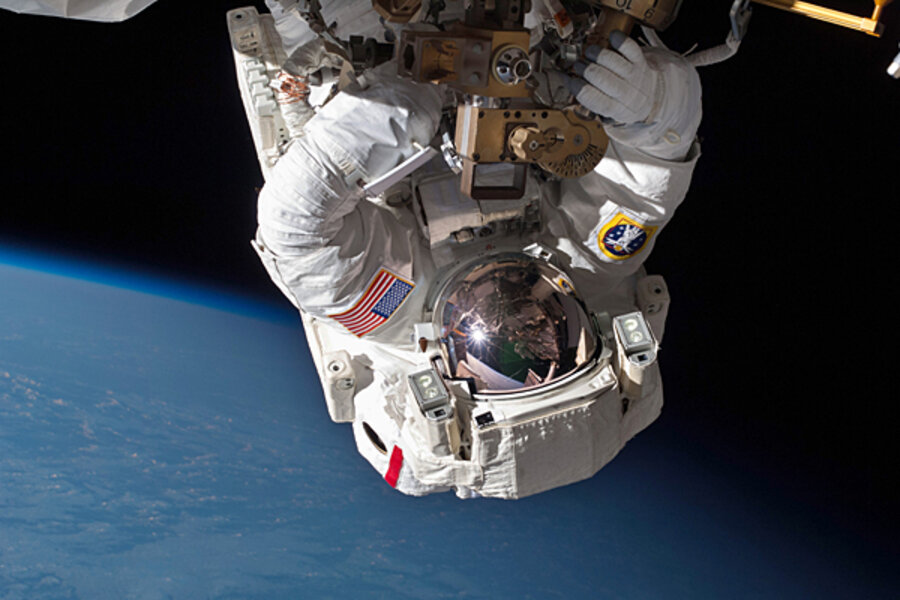3-D pizza on Mars? NASA awards grant.
Loading...
How do you send space travelers off to Mars with enough food to last them the entire journey? You don’t. You print it instead.
In a few short years, hungry meal-goers, in space or otherwise, may be able to “print” out pizza, cake, and other entrees with the push of a button, thanks to the ongoing evolution of 3-D printing technology.
3-D printers, which form objects digitally by layering thin sheets of plastic, rubber, and other material atop one another, have emerged as the hot new thing in manufacturing technology in recent years. They’ve been used to create plastic parts, toys, and even a functioning gun.
Now, NASA has awarded a $125,000 grant to develop a food synthesizer to engineer Anjan Contractor and his company, Systems & Materials Research Corp. under its Small Business Innovation Research program. The NASA grant gives Mr. Contractor and SMRC six months to come up with a prototype for the device.
“Long distance space travel requires 15-plus years of shelf life,” Contractor said in an interview with the news website Quartz. “The way we are working on it is, all the carbs, proteins and macro and micro nutrients are in powder form. We take moisture out, and in that form it will last maybe 30 years.”
First up on the 3-D menu is pizza, which is an ideal first candidate for 3-D printing because of its individual layers.
Here’s how it works: With the aid of a “digital recipe” the printer combines powders from various flavor cartridges with water and oil in the machine’s mixing chamber. The mixtures then feed into a system of valves, and each “layer” is squeezed out individually: in the pizza’s case, the crust comes out first, followed by the sauce, cheese, and protein.
NASA hopes a 3-D food source would provide a solution to fueling astronauts on long space missions. A theoretical trip to Mars, for instance, would take about 520 days one way and require a nutritious food source that won’t spoil for decades. The food astronauts currently rely on are a lot like military-issued MREs (meals ready to eat), which are highly processed. Printed food, where nutrients and calories could be customized, has the potential to allay some of those issues.
“As NASA ventures further into space, whether redirecting an asteroid or sending humans to Mars, we will need to make transformation improvements in our life support systems, including how we feed our astronauts during long, deep space missions,” NASA spokesman Allard Beutel told ABC News. “In-space and additive manufacturing offers the potential for game-changing weight savings and new mission opportunities, whether ‘printing’ food, tools or entire spacecraft.”
The thought of Mars-bound astronauts having a nutritionally balanced pizza party is captivating, but Contractor sees a more earthbound purpose for 3-D food. Because of its long shelf life and potential for customization, it could solve a wealth of food-related problems, including catering to dietary needs and reducing food waste. “One of the major advantages of a 3-D printer is that it provides personalized nutrition,” Contractor told Quartz. “If you’re male, female – they all have different dietary needs. If you can program your needs into a 3-D printer, it can print exactly the nutrients that person requires.”
It’s still early, so it’s unclear what the limitations of printed food might be. But Contractor preaches that keeping an open mind may be necessary to solve the world’s food supply problems. "I think, and many economists think, that current food systems can't supply 12 billion people sufficiently," he said. "So we eventually have to change our perception of what we see as food."








